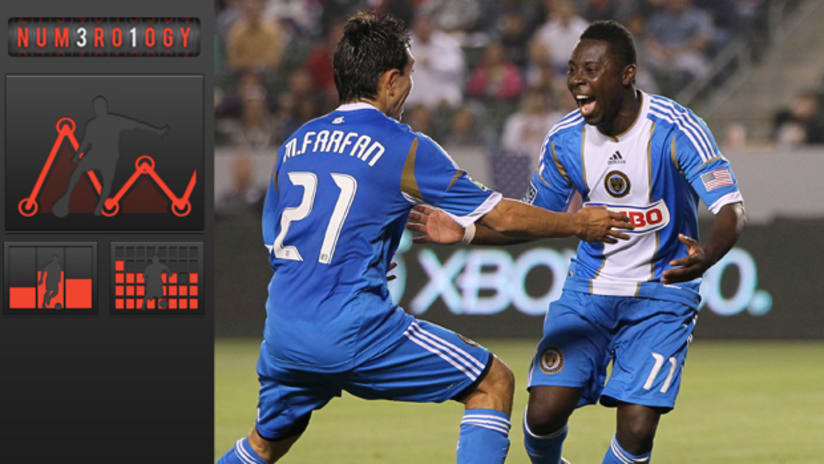If you've come this far, then you know what the big question is: What does the future hold? That's the point of predictive analysis in the first place, right?
Our four MLS performance analysts delve into that question here in Part 4 - the final installment - of our Q&A. Click here for Part 3.
Devin Pleuler: What is the future of soccer analytics?
Timothy Crawford – New England Revolution: We have spent some time keeping an eye on what the other major sports have done with their analytics and considered how we can implement it in soccer. At the MIT Sloan Sports Analytics Conference, we got to see a lot of different ideas people were having and we’ve played with some of those ideas. In addition, we also heard a lot about analyzing and improving an athlete’s mind. So much of sports is making smart decisions at reflex speeds and, if that can be trained or at least improved, it could have a huge affect on a player’s quality. It would then lead to trying to better evaluate which players already have the mental skills needed and which ones are more able to be trained. Right now, we can quantify physical skills and attributes, but the brain is a bit of an unexplored area.
Breakable Records - Lassiter's 27 Goals
Sean Rubio – San Jose Earthquakes: There is an incredibly long ways to go in terms of developing truly meaningful advanced metrics that can be applied in a valid and consistent manner. That being said, I’m optimistic. There are a lot of extremely bright people inside the soccer analytic industry and, over time, it will be very interesting to see what direction(s) the industry moves in.
David Lee – New York Red Bulls: I think there are three main areas where the future of soccer analytics is going to have significant value:
- Player Recruitment: We are already seeing some of the bigger European teams investing significantly in their recruitment analysis to refine the process of how they recruit and select players. With the ability to benchmark performance over a number of seasons and in comparison to current players in that position there are more opportunities to utilize statistics. Also the fact that most current statistics that are used are on an individual basis, lends itself to measuring individuals for recruitment more neatly – there are of course challenges with this approach in that you have to find a way to adjust for the team they're in and how they are used in that team who may have a different style to your own.
- Tracking Data (off-the-ball): As I have mentioned, we have collected so much information on the position of players on and off the ball that I can foresee this becoming a key area of study for many analysts looking to gain new insights. Perhaps looking into network analysis of how each player is positioned on the field at various instances is a possible large-gain area in soccer analytics.
- Open Data: Again, it's already been mentioned but simply the ability to have a more open data stream for fans and researchers to gain access to and perform their own analysis will drive the industry forward at a much quicker rate than currently possible.
Rui Xu – Sporting Kansas City: If the end-goal is to develop a singular comprehensive statistic akin to Wins Above Replacement in baseball, a lot of people are probably going to be disappointed. It’s surely possible, as WAR is just a framework and you can tweak the inputs for soccer, but there are just too many inputs (and subjective ones, at that) to account for.
I think a less ambitious statistic, such as Wins Probability Added, is eminently reachable. I’ve derived a basic version of it for MLS (hat tip to Graham Macaree of SBNation, who inspired my work and has a great analytical mind), both empirically and mathematically, but the only inputs so far are goals and cards. Ideally, we’ll be able to input every single match event and be able to output data on who created the most wins for their team. I think this would be a very good start in assessing how a player performed in the past.
We will be able to quantify team style, both on a per-game and season-long basis. We’ll have pace-adjusted statistics publicly available, and we’ll also be able to produce league equivalences to estimate how much better/worse a player from another league will be when they come to the MLS. The technology will be available to calculate expected probability of a goal at any spot on the field, based on location of the defenders, and we will also be able to calculate the expected probability that a shot becomes a goal, based on location from goal, goalie positioning, and number of defenders between the ball and the goal.













